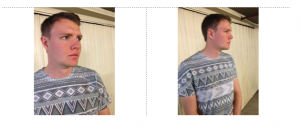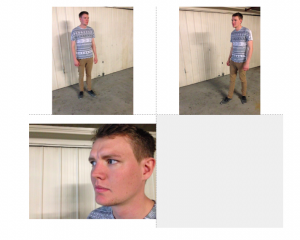‘Gone Girl’ directed by David Fincher. 2014.
Medium Close up of a policeman starting the scene, suggesting to the audience that the action is taking place at a police station. This shot is the beginning of suggested cues for the audience to follow, in order to gain the greatest impact. The next shot is a medium shot of a female character, possibly a detective, positioned to the right of the frame, looking to the left, suggesting the position of the person she is talking to. Following this the audience sees a male character talking back, the one being interrogated, positioned to the left of frame, and looking to the right. Throughout this conversation that is taking place, it continues in this formation, which is a clear example of external composition. The shots are never the same, they are from different angles however from the same focal length. Having the different camera positions, allows the audience to see the room’s surroundings. There is an over the shoulder shot of the detective, where the camera is looking at the male character,and then one of the male character looking at the detective, giving cues to the audience that the conversation is happening primarily between these two characters. Having these different shots gives the scene some dynamics which intrigues the audience. There are sharp cuts which you would expect in an interview/interrogation scene. There are some medium shots of the detective which gives the audience a quick look at her taking notes, showing another feature of an interview. There is symmetry shown in all of the shots, which is aesthetically appealing even if the audience doesn’t recognise this. The final shots of the scene show all three of the characters sitting around the table, which is important because the audience needs to see all of their expressions and body movements after the intense conversation. The shot then cuts to the male character leaving the room and entering another, and the character follows this movement, while having the other two talking in the foreground of the frame. This suggests the importance of the investigators compared to the male character. He is still in shot, but is shown by himself, with a wall in between them. This individualising is shown throughout the whole scene, by having the male character by himself at one end of the table, while the other two characters are at the other end. This action alone suggests that he is the odd one out. All of the elements put him in the center of the scene, allowing the audience to create expectations that he is on a different level.


